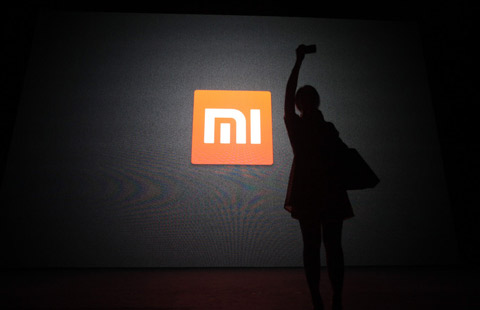Confidence low that equity rally will last
(Bloomberg) Updated: 2014-12-03 08:21Exchange-traded fund investors are showing little confidence that the world-beating rally in China's domestic stock market will last.
Traders pulled about $845 million from the CSOP FTSE China A50 ETF in the two weeks through to Friday, the biggest outflow since the $5.7 billion fund was started in 2012, according to data compiled by Bloomberg.
The $9.7 billion iShares FTSE A50 China Index ETF lost $585 million last week, the most since 2009, as the Shanghai Composite Index rose to a three-year high.
Investors in the two largest ETFs tracking mainland shares are retreating after the Shanghai gauge jumped 11 percent in the past month, the top performance among 93 benchmark indexes tracked by Bloomberg.
Mainland stocks are valued at the biggest premium over their Hong Kong counterparts in 16 months after China opened up its market with the Shanghai-Hong Kong Stock Connect program and the central bank unexpectedly cut interest rates to combat the weakest expansion since 1990.
"We've seen signs of slower economic growth from China in recent weeks," said Todd Rosenbluth, director of mutual-fund research for S&P Capital IQ in New York, on Monday. "Investors want to reduce their exposure."
The Shanghai Composite fell for the first time in eight days on Monday, losing 0.1 percent after a gauge of Chinese manufacturing dropped in November to the lowest since March.
The stock benchmark advanced 7.9 percent last week, the most since October 2010, after the central bank cut borrowing costs for the first time in two years.
Overseas investors had used the two Hong Kong-listed ETFs to gain exposure to the mainland market since April, when the government unveiled a plan to give anyone with a Hong Kong brokerage account the ability to trade Shanghai shares.
The Shanghai index has gained 28 percent since then, pushing the premium for shares of dual-listed companies to 10 percent over their Hong Kong peers on Monday.
That's the biggest gap since July 2013 and a reversal from four months ago, when mainland stocks traded at a discount of 11 percent, data compiled by Hang Seng and Bloomberg show.
Investors started withdrawing money from the two largest Chinese ETFs in mid-October after adding a combined $3.5 billion over the previous four months. The outflows accelerated in the past two weeks, making redemptions since Nov 24 from the two funds the biggest among more than 3,600 ETFs tracked by Bloomberg after a Japan-focused security.
Brendan Ahern, a managing director at Krane Fund Advisors LLC, a provider of Chinese ETFs, said: "Some investors got in early on the trade and are taking off the bets."
The drop in China's Purchasing Managers Index followed data on industrial profits and new loan growth that indicate the world's second-largest economy is losing momentum.
Economists at banks including JPMorgan Chase & Co, Barclays Plc and UBS AG all said the central bank will act again to shore-up demand after it reduced the one-year lending rate by 0.4 percentage point to 5.6 percent last month.
Lower borrowing costs and the drop in oil prices will help sustain the rally in Chinese equities, according to Gary Greenberg, a money manager at Hermes Investment Management who helps oversee $3 billion in emerging-market stocks and invests in mainland companies.
"The market looks reasonably well supported," Greenberg said on Monday.
Geoffrey Dennis, the head of emerging-market strategy at UBS AG, said ETF traders are selling to lock in profits following weak economic data and a lukewarm reception of the bourse link since it started on Nov 17.
Investors used about 16.5 percent of the link's daily quotas in the second week of the program, a drop from 24.1 percent during the debut week. International investors briefly turned net sellers of Shanghai shares through the connect for the first time on Monday.
"The initial reaction to mutual market access has been somewhat disappointing," said Dennis on Monday.
"There is a bit of panic, a bit of nervousness about the economy in China. It became an excuse to sell the market."
- Cash crunch fans expectation on RRR cut
- US extends antidumping duties on China's thermal paper
- Modern food van with ancient look in Shanghai
- China home prices continue to cool in November
- Asia's top 3 billionaires all Chinese
- Old investment remedy the treatment for China's "new normal"
- China's solar sector opposes US anti-dumping ruling
- BMW to recall 846 cars in China
















